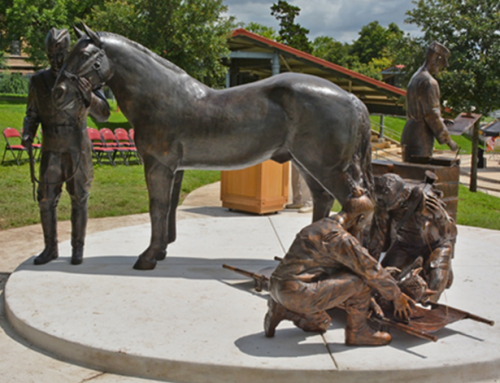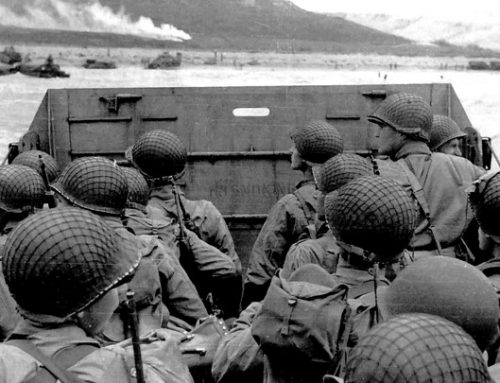June 6 – Omaha Beach D-Day
Bloody Omaha. More than 2000 American casualties at the end of the first day which was the highest for any Allied landing zone. If it could go wrong, it did on Omaha. The pre-invasion aerial bombardment dropped the bombs behind the Germans due to the thick fog obscuring the drop zone. The naval bombardment was virtually ineffective.
The narrow beach filled with anti-invasion obstacles backed up to heavily defended high bluffs on both ends of the landing zone allowed the German defenders to fire from an elevated position. Choppy seas and strong current carried landing craft away from their assigned sectors. The difficult, hazardous landings for the infantry were made worse when only two of the initial twenty-nine DD (duplex drive) M4 Shermans from the 741st tank battalion made it ashore. The 743rd Tank Battalion fared better but still there were less than half of the anticipated tanks intended to support the infantry. The end result was very high casualties were among the first wave of the 1st and 29th infantry divisions and tank battalions

The difficulties of the first wave resulted in grave delays for successive landings. However, eventually there was a toe hold, then another and another as units breached the coastal defenses and scaled the bluffs between strong points. Each subsequent wave, was able to utilize these initial penetrations. What looked like sure defeat turn into a tenuous hold of the beach. By the end of D-Day through shear grit and determination, the American troops had fought their way across 300 yards of open beach, scaled the heights overlooking the channel, and occupied the plateau above the beach.





